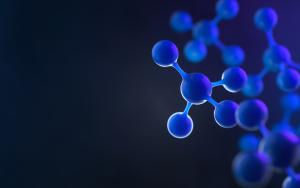Last week on the Brain Blog we reviewed the basics of amyotrophic lateral sclerosis (ALS) in honor of ALS Awareness Month. This week we will be reviewing the histopathological features of ALS as well as new developments in potential treatments. ALS is largely defined by the degeneration of motor neurons in the primary motor cortex. Wijesekera & Leigh (2006) describe that in the upper motor neurons, this includes,
“depopulation of the Betz cells in the motor cortex (Brodmann area 4), variable astrocytic  gliosis affecting both the grey matter and underlying subcortical white matter of the motor cortex, and axonal loss within the descending pyramidal motor pathway associated with myelin pallor and gliosis of the corticospinal tracts”.
gliosis affecting both the grey matter and underlying subcortical white matter of the motor cortex, and axonal loss within the descending pyramidal motor pathway associated with myelin pallor and gliosis of the corticospinal tracts”.
In the lower motor neurons, “pathology primarily affects the ventral horn motor neurons of the spinal cord and brainstem,” while “there is relative sparing of the motor nucleus of Onufrowicz in the S2 spinal segment and the cranial nerve oculomotor nuclei” (Wijesekera & Leigh, 2009). Other neurons are atrophic and show intraneuronal forms of pathology such as Bunina bodies and Ubiquitinated inclusions or ubiquitin-immunoreactive (Wijesekera & Leigh, 2009). These changes are what cause ALS’ signature symptoms such as atrophy, and muscle twitching and stiffening.
Current pharmacological treatments for ALS include Riluzole and Edaravone (Siddique & Siddique, 1993). Proposed novel treatments for ALS often include small molecule drugs. Small molecule drugs have a low molecular weight and can easily enter cells, this makes them ideal for targeted pharmacological approaches (National Cancer Institute, 2020). Pimozide, a drug originally approved for treating schizophrenia, has been tested in animal models of ALS (Bose, 2019). Pimozide treatment was “ found to rescue locomotor deficits in multiple animal models of ALS,” while a trial with human patients “confirmed the stabilization of motility” (Bose, 2019). In both human and animal models, there was target engagement at the neuromuscular junction (NMJ) (Bose, 2019). NMJ engagement was then used as a biomarker to assess a pimozide derivative TRVA242, which was found to improve locomotion in the zebrafish model (Bose, 2019).
Another proposed small molecule is SRI-22818 (Matthew, Ruiz, Pathak & Suto, 2020). SRI-22818 belongs to the active category in neurons, but the inactive category in astrocytes, and is a source of neuroprotection against a variety of toxicities (Justia Patents, 2018). In previous research, experts found, “SRI-22818, increases NF-κB expression and activation and SOD2 levels in vitro and has activity in vivo in the SOD1-G93A reference model of ALS” (Matthew, Ruiz, Pathak & Suto, 2020). This is significant as mutations in SOD1 and SOD2 have been associated with ALS (Matthew, Ruiz, Pathak & Suto, 2020). SRI-22818 previously showed “outstanding brain penetration,” but “exhibited short half-life” in human and mouse subjects (Matthew, Ruiz, Pathak & Suto, 2020). Due to it only being effective intravenously, experts tested variants of the compound “to identify compounds with improved pharmacokinetic properties, such as microsomal stability and solubility as well as increased potency” (Matthew, Ruiz, Pathak & Suto, 2020). Three different analogs were found to be “more potent activators of NF-kB,” but none were found to be “significantly better than the original parent compound,’ suggesting that the parent compound can “further expand to new scaffolds to develop novel compounds with high potency and stability” (Matthew, Ruiz, Pathak & Suto, 2020).
Ropinirole is not a small molecule but has also been tested as a novel treatment for ALS (Okano, Yasuda, Fujimori, Morimoto & Takahashi, 2020). Ropinirole is a dopamine receptor agonist used in antiparkinsonian treatments (Okano, Yasuda, Fujimori, Morimoto & Takahashi, 2020). Potential mechanisms of Ropinirole treating ALS are suppressing oxidative stress, inhibiting TDP-43 and FUS aggregation, improving mitochondrial function, and suppressing neurite retraction and cell death (Sporadic, TDP-43, FUS mutation; Okano, Yasuda, Fujimori, Morimoto & Takahashi, 2020). Oxidative stress “plays a central role in common pathophysiology of neurodegenerative diseases” and “may induce cellular damage, impairment of the DNA repair system and mitochondrial dysfunction” (Kim, Kim, Rhie & Yoon, 2015). Ropinirole was found to “significantly [improve] multiple ALS phenotypes in vitro” (Kim, Kim, Rhie & Yoon, 2015). Experts propose that this is due to Ropinirole’s oxindole skeleton and antioxidant properties (Kim, Kim, Rhie & Yoon, 2015).
As current ALS treatment is palliative, making advancements in treatment, prevention, and screening critical. Especially as global life expectancy increases, the rate of ALS and other neurodegenerative diseases will increase (Siddique & Siddique, 1993; Gowland et al., 2019). Researchers in the UK proposed that the rates of ALS in the UK will rise “from 8.58 per 100,000 persons in 2020 to 9.67 per 100,000 persons in 2116” (Gowland et al., 2019). Globally, one study projects “that the number of ALS cases across the globe will increase from 222,801 in 2015 to 376,674 in 2040, representing an increase of 69%” (Arthur et al., 2016). For more information about ALS or support for people with ALS or their support network, you can reach out to organizations such as the ALS Therapy Development Institute, and the ALS Association.
References
Arthur, K. C., Calvo, A., Price, T. R., Geiger, J. T., Chiò, A., & Traynor, B. J. (2016). Projected increase in amyotrophic lateral sclerosis from 2015 to 2040. Nature Communications, 7. https://doi.org/10.1038/ncomms12408
Bose. (2019). Novel small molecule TRVA242 targets neuromuscular junction in amyotrophic lateral sclerosis. http://www.nrronline.org/article.asp?issn=1673-5374;year=2020;volume=15;issue=6;spage=1041;epage=1042;aulast=Bose
Gowland, A., Opie-Martin, S., Scott, K. M., Jones, A. R., Mehta, P. R., Batts, C. J., Ellis, C. M., Leigh, P. N., Shaw, C. E., Sreedharan, J., & Al-Chalabi, A. (2019). Predicting the future of ALS: The impact of demographic change and potential new treatments on the prevalence of ALS in the United Kingdom, 2020–2116. Amyotrophic Lateral Sclerosis & Frontotemporal Degeneration, 20(3–4), 264–274. https://doi.org/10.1080/21678421.2019.1587629
Justia Patents. (2018). US Patent for Treatment of neurodegenerative diseases, causation of memory enhancement, and assay for screening compounds for such Patent (Patent # 9,980,969 issued May 29, 2018)—Justia Patents Search. https://patents.justia.com/patent/9980969
Kim, G. H., Kim, J. E., Rhie, S. J., & Yoon, S. (2015). The role of oxidative stress in neurodegenerative diseases. Experimental Neurobiology, 24(4), 325–340. https://doi.org/10.5607/en.2015.24.4.325
Mathew, B., Ruiz, P., Pathak, V., & Suto, M. J. (2020). Development of novel small molecules for the treatment of ALS. Bioorganic & Medicinal Chemistry Letters, 126950. doi:10.1016/j.bmcl.2020.126950
National Cancer Institute. (2011, February 2). Nci dictionary of cancer terms [NciAppModulePage]. National Cancer Institute. https://www.cancer.gov/publications/dictionaries/cancer-terms
Okano, H., Yasuda, D., Fujimori, K., Morimoto, S., & Takahashi, S. (2020). Ropinirole, a new als drug candidate developed using ipscs. Trends in Pharmacological Sciences, 41(2), 99–109. https://doi.org/10.1016/j.tips.2019.12.002
Siddique, N., & Siddique, T. (1993). Amyotrophic lateral sclerosis overview. In M. P. Adam, H. H. Ardinger, R. A. Pagon, S. E. Wallace, L. J. Bean, K. Stephens, & A. Amemiya (Eds.), GeneReviews®. University of Washington, Seattle. http://www.ncbi.nlm.nih.gov/books/NBK1450/
Wijesekera, L. C., & Leigh, P. N. (2009). Amyotrophic lateral sclerosis. Orphanet Journal of Rare Diseases, 4, 3. https://doi.org/10.1186/1750-1172-4-3
